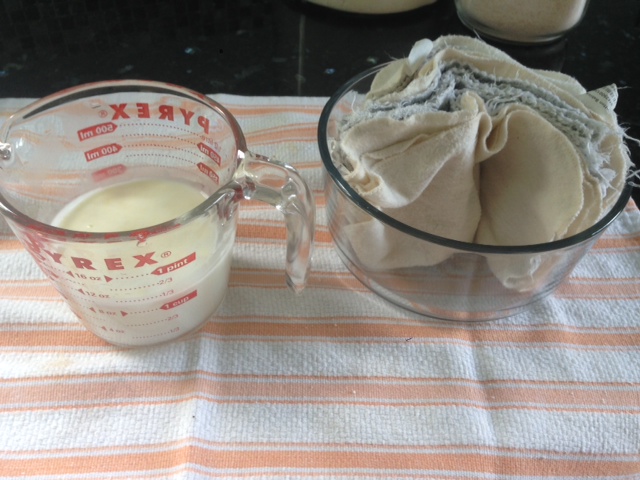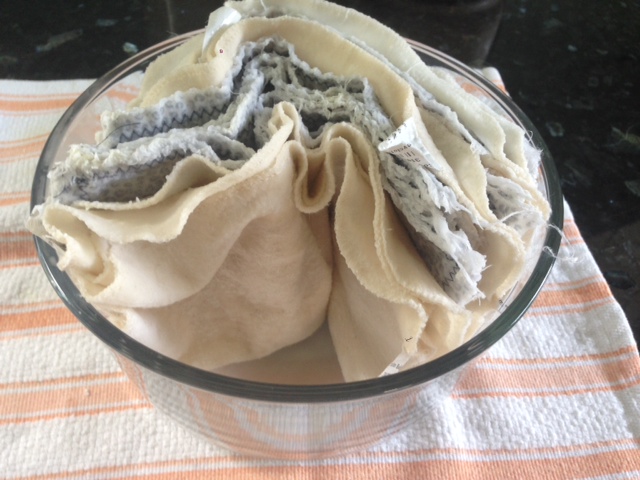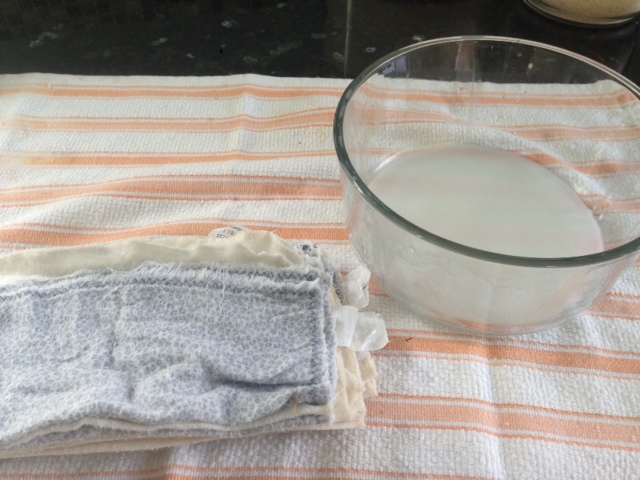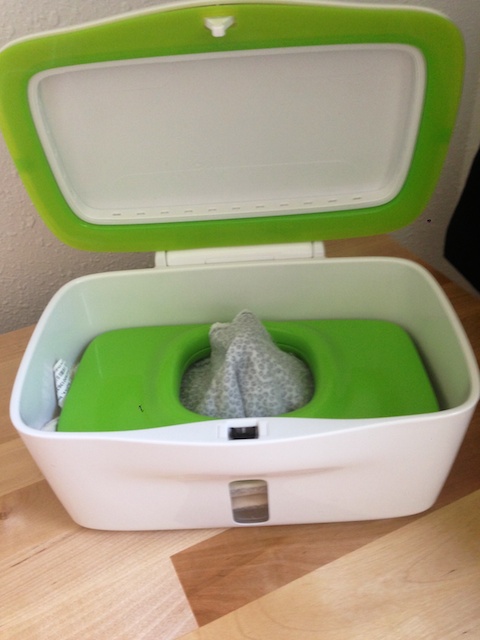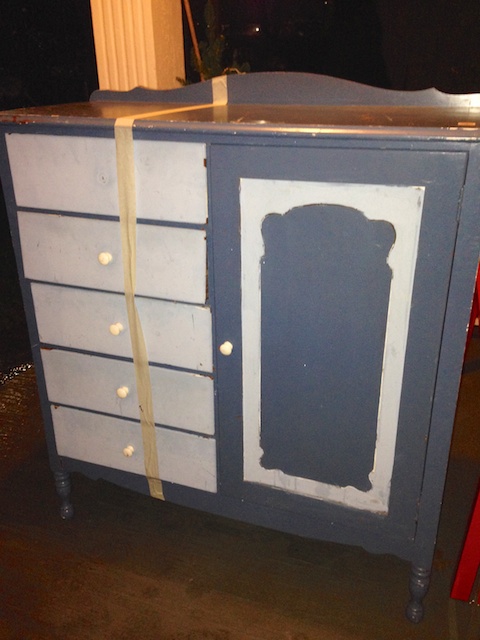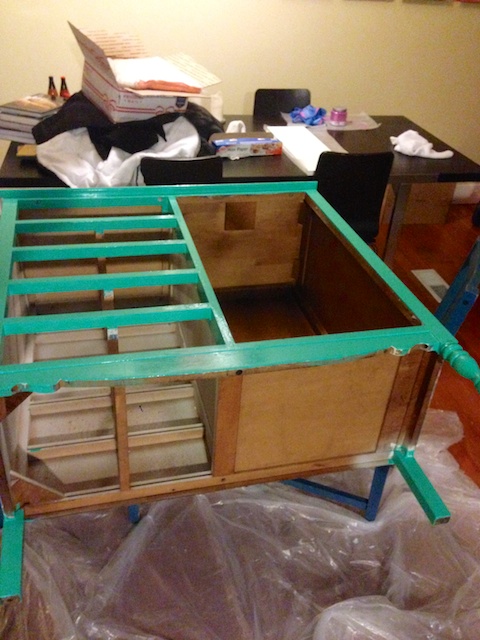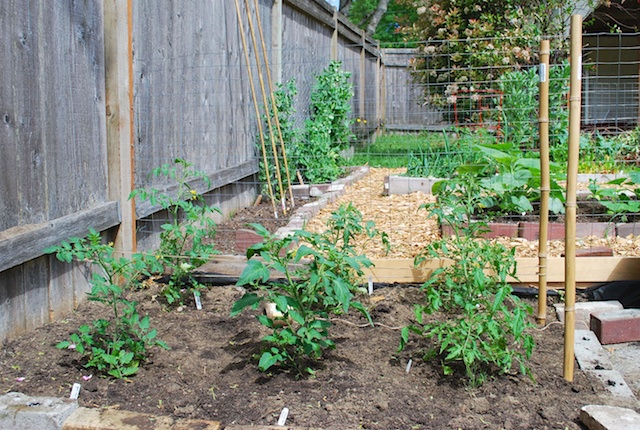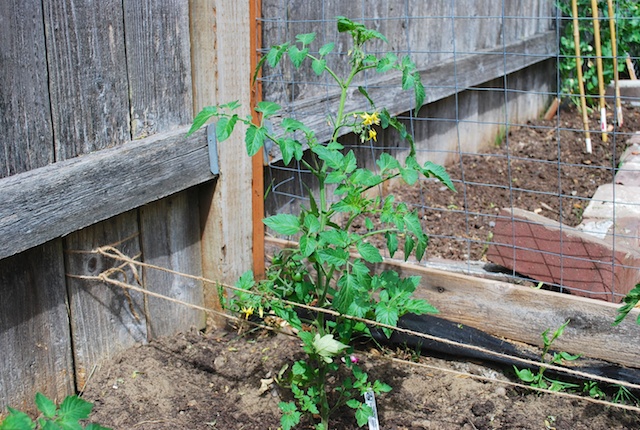Holiday Felt Banner Garland
 Thursday, December 10, 2015 at 06:29PM
Thursday, December 10, 2015 at 06:29PM This is the first Christmas in the new house and I wanted to really spend some quality time decorating. Especially since this is Lady Paloma's first Christmas where she is involved and interested in what is happening. She decided to nap today so I am taking full advantage of this time - the dishes and laundry can wait.
Over the years I have experimented with different themes and color schemes for Christmas but always seem to come back to a more traditionally influenced theme. Now I think I've settled on something that I can add to and really own.
About 16 years ago I picked up a felt angel tree topper. I have always loved her and continue to want to keep her around. Something about her just feels right for me. The other piece I continue to go to every year is a hand felted mistletoe branch. I hang it with a piece of red and white striped ribbon. So these two items are the base of my holiday decorating schematic.
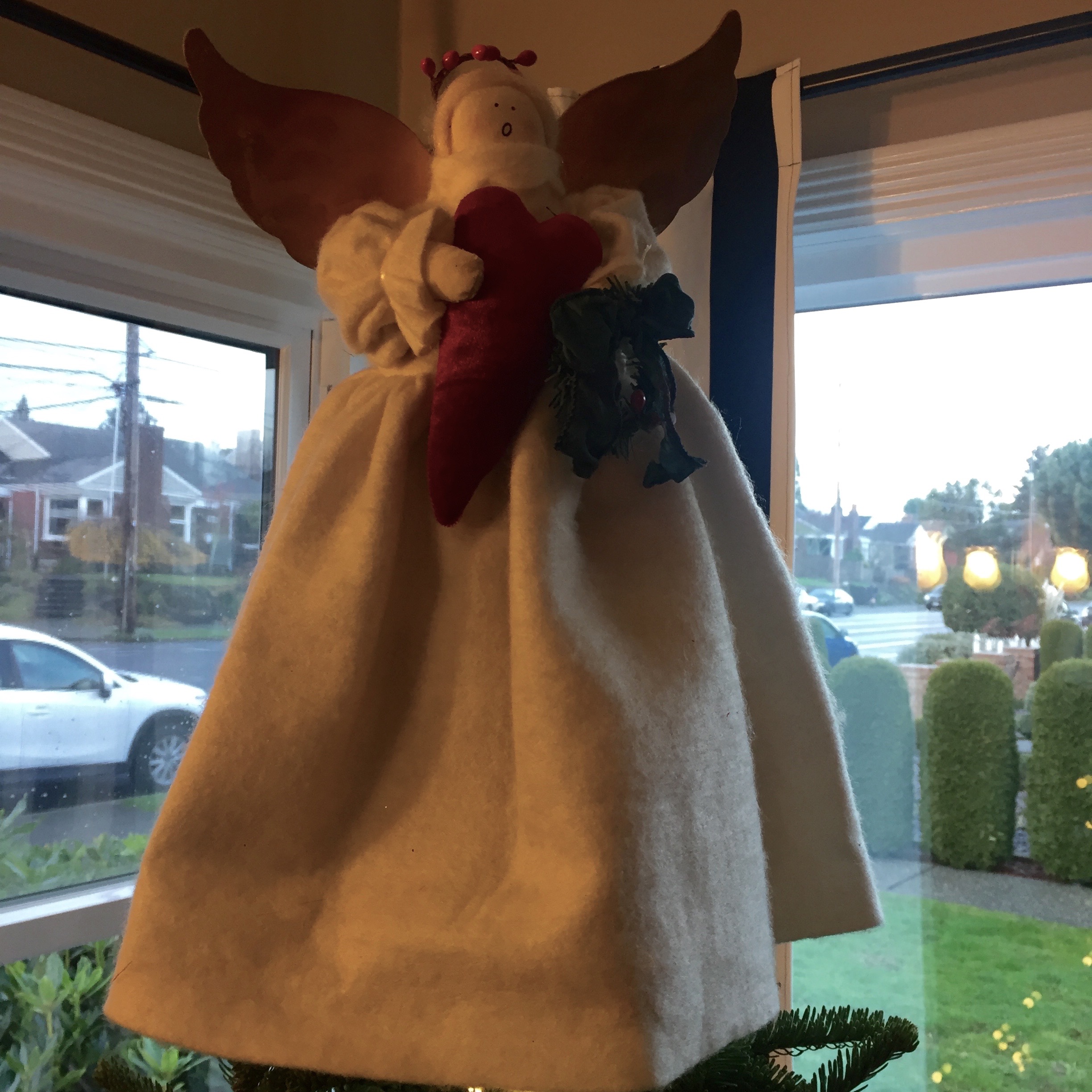
I decided on a felt flag garland for another element to support this handmade felt look. I went to a local fabric store and had them cute me 1/2 yard of thick felt on a bolt in red, white and green. The felt on a bolt is thicker and comes in some great colors. You could use craft felt also or really any fabric you wanted.
To hang it on, instead of just jute twine or a ribbon I picked up this slightly off white macramé cord. You also need scissors, a straight edge/ruler, straight pins, sewing machine, thread and a template. I made my flag template out of stiff paper. I am using a rectangle flag shape and want it to be the same on each side of the flag so cut one long template so the fabric pieces will wrap around the cord.
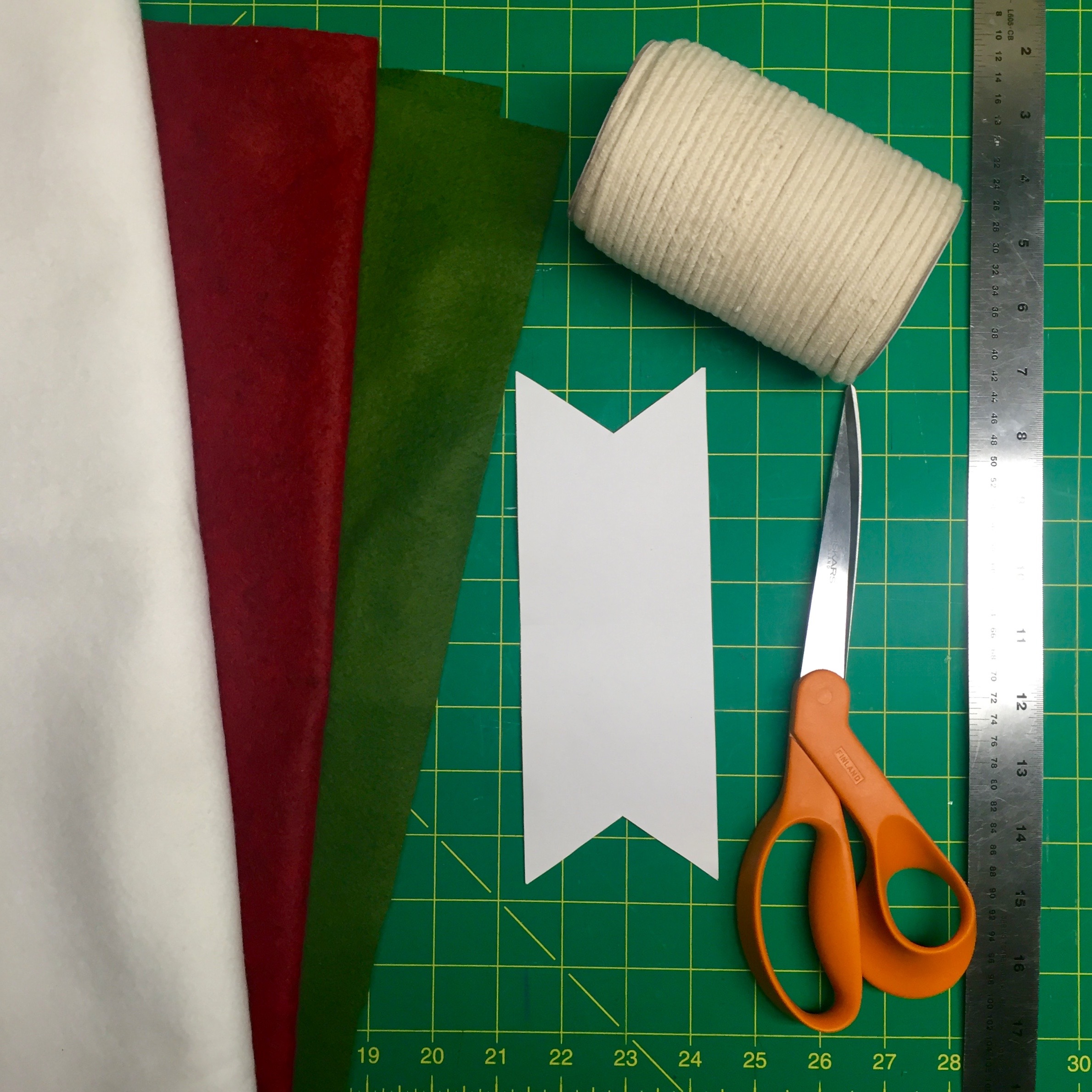
Next I ironed the felt and cut all my flags out. I decided to cut the notch after cutting out the main body of the flag.
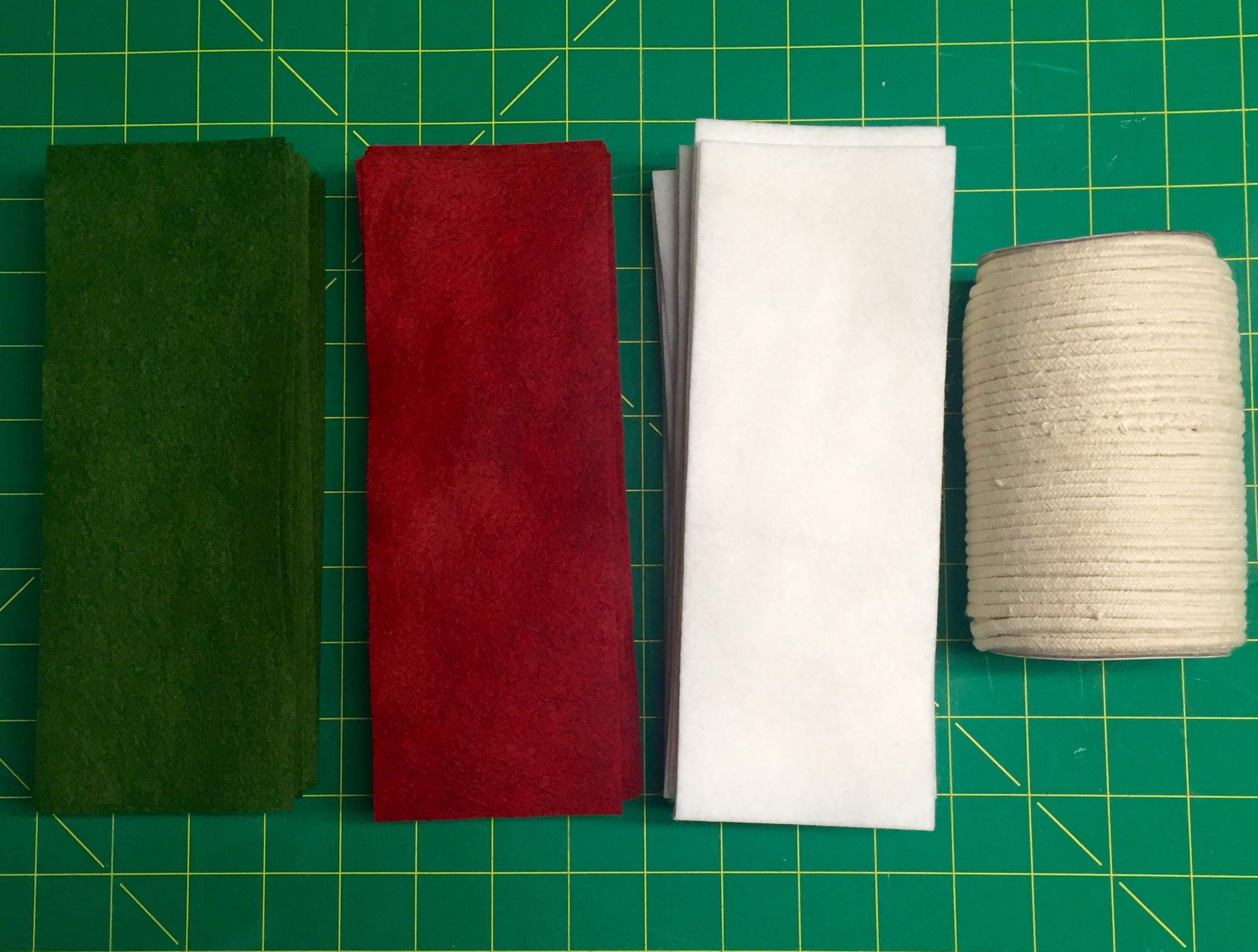
I measured the cord to get the length of the area I was hanging the finished garland. I added 6 inches on each end for tying on etc. Then I folded each piece around the cord three inches apart and secured with a straight pin.

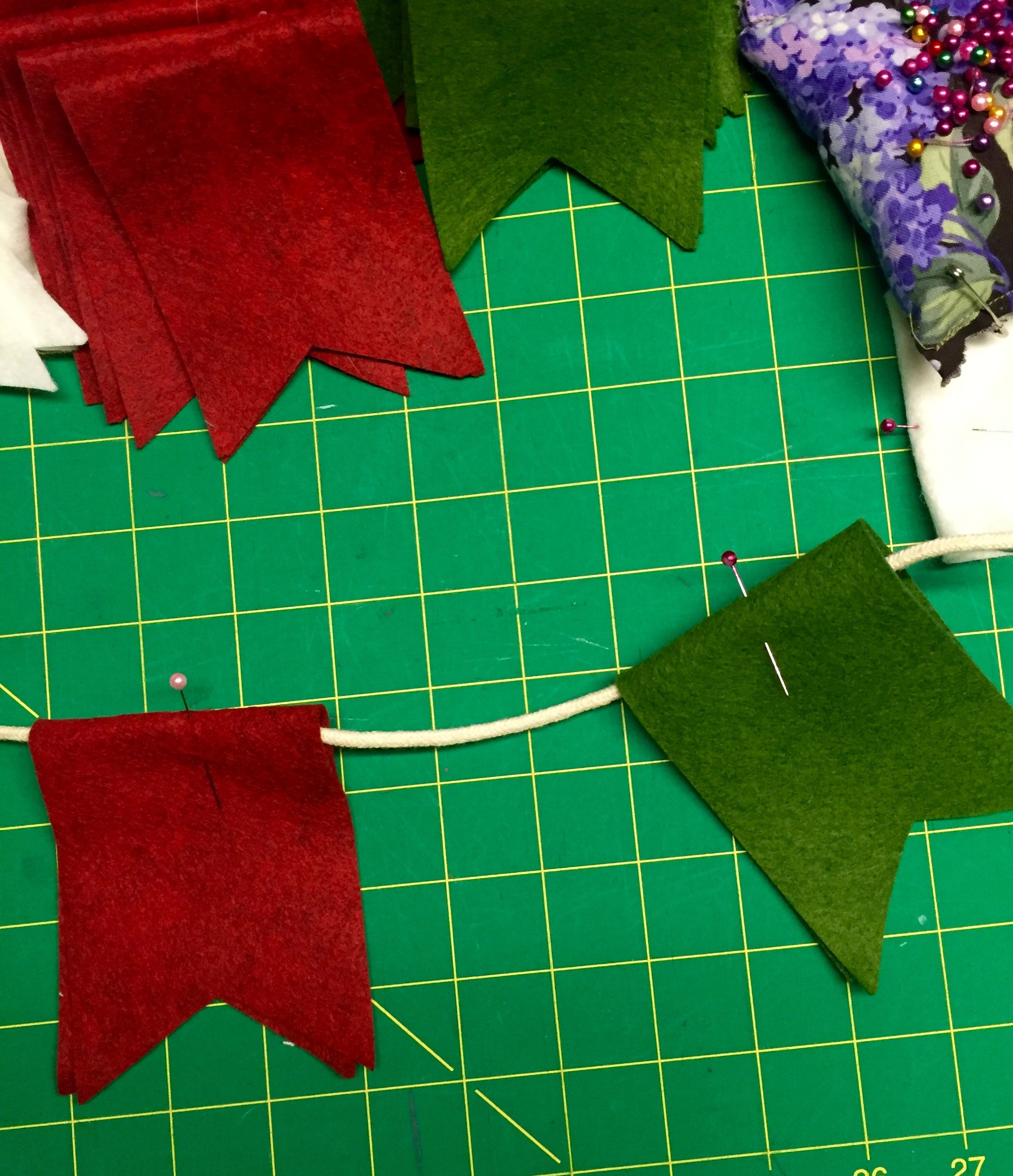
Once I had them all in place I headed to my sewing machine. I chose red thread for contrast on some of the flags. You could use any color you like. The goal here is to secure the flag to the cord. So sew in a straight line from the notch in the flag over the cord. Then trim all threads.
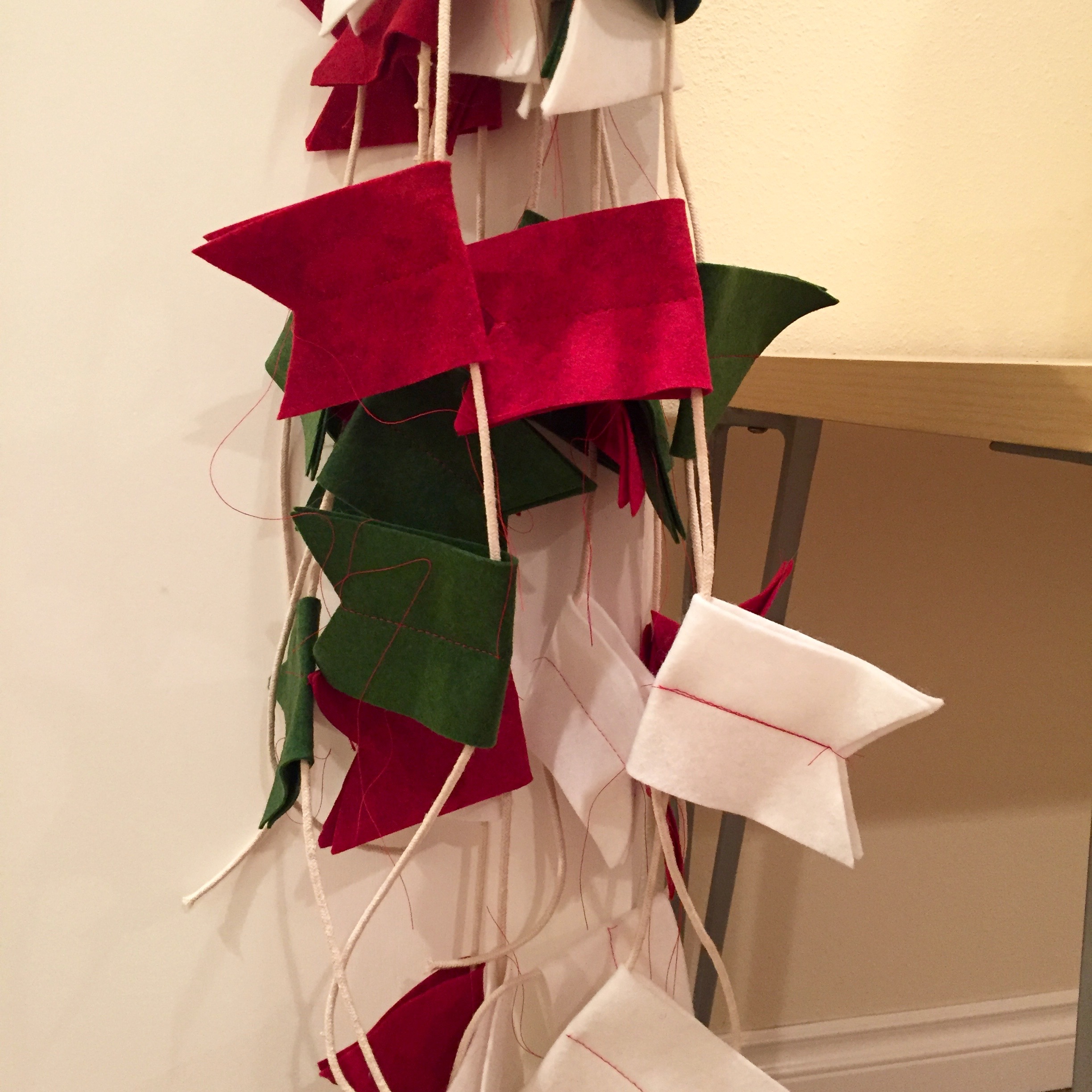
Now hang in your desired location. I made one for several doorways and over our fireplace. You can hang with tiny nails, pins or small clear Command Strips for decorating. I used these and just threaded my cord through them to keep them in place.
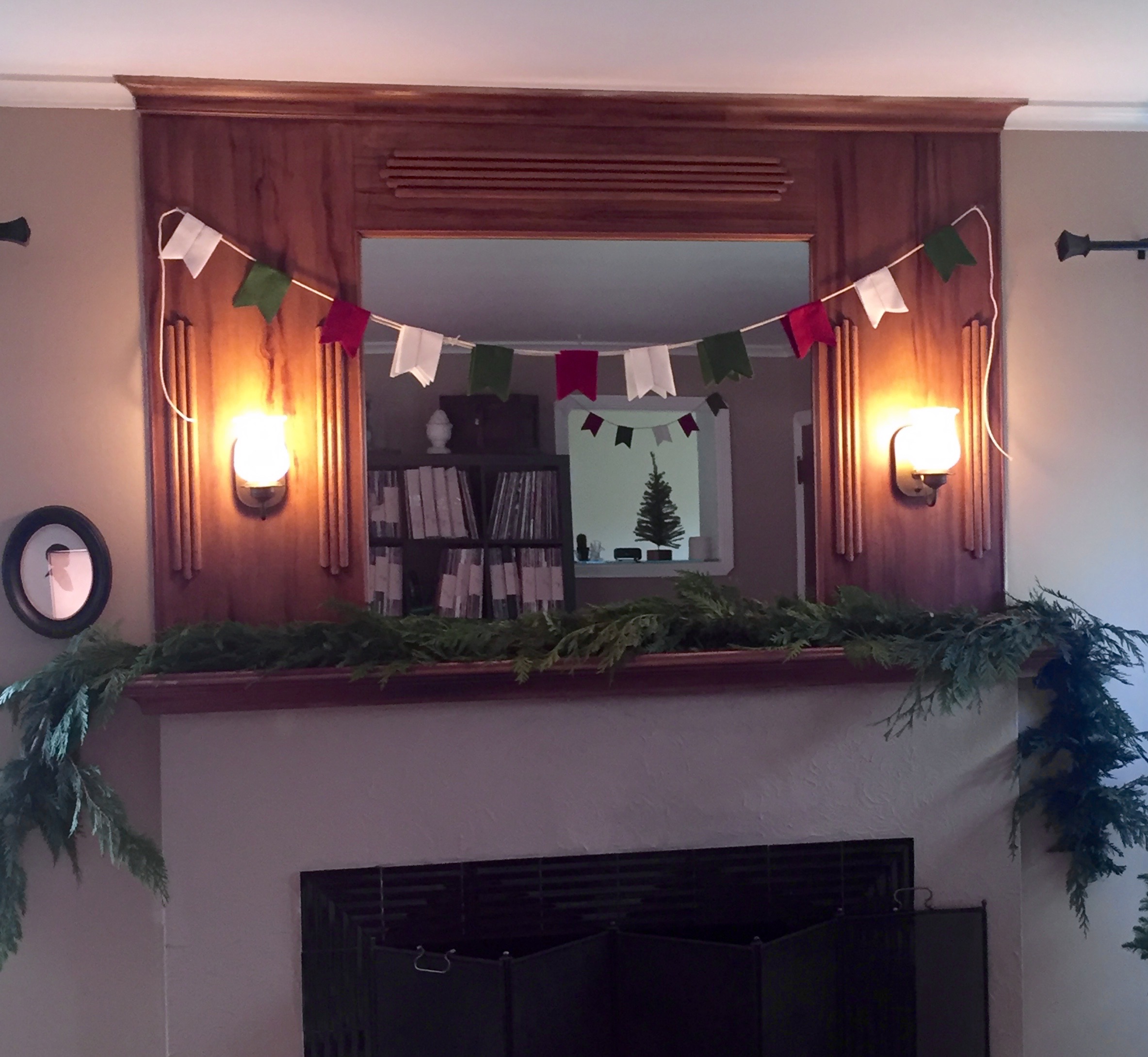

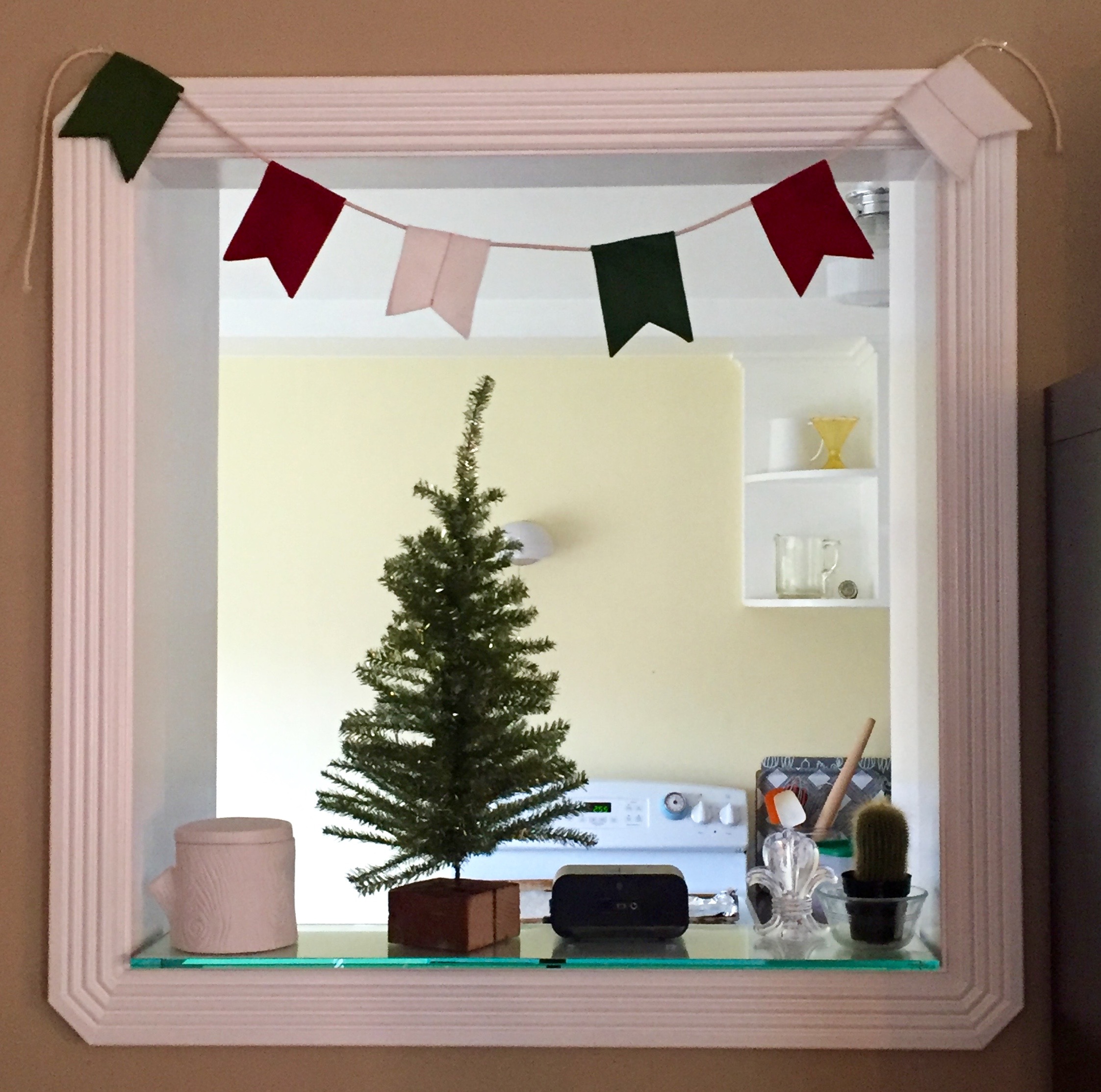
I really love how they turned out. They are a nice little touch to bring the whole house together. I hope you get are finding the time to get your home in the holiday spirit.



